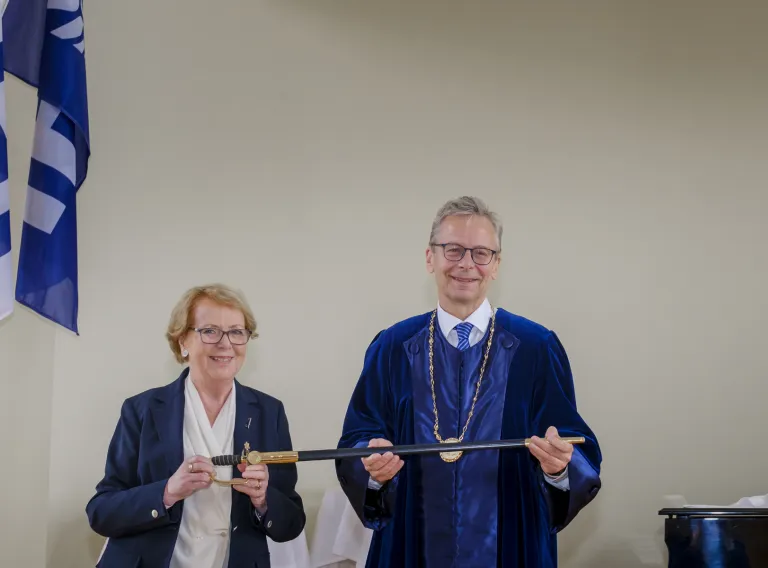
An exhibition dedicated to the presidency and work of Vigdís Finnbogadóttir will be opened next year in the Loftskeytastöð building, the first radiotelegraph in Iceland, which neighbours Veröld, in accordance with a letter of intent from the government and the University of Iceland. The letter of intent was signed at a celebration in the University of Iceland Aula on 17 June, held to mark the University's 110th anniversary. As part of this event, Vigdís Finnbogadóttir presented the University of Iceland with artefacts from her presidency, which will form the basis of the exhibition.
The letter was signed by Katrín Jakobsdóttir, Prime Minister of Iceland, Bjarni Benediktsson, Minister of Finance and Economic Affairs, Sigurður Ingi Jóhannsson, Minister of Transport and Local Government and also the acting Minister of Education, Science and Culture, and Jón Atli Benediktsson, Rector of the University of Iceland. The letter states that the government commits to supporting the exhibition in the radiotelegraph building which was, incidentally, first opened on 17 June 1918. The building will also house facilities for scholarship, research and various outreach projects.
"The influence that Vigdís Finnbogadóttir has had on Icelandic society, and particularly those Icelanders who grew up during her presidency, can hardly be overstated. Including, of course, the impact that it made when Icelanders woke up one morning in June 1980, having elected a woman as head of state, the first nation ever to do so. And in a very short time, Vigdís managed to unite the nation behind her. The general view at that time was that the President of Iceland should be a symbol of unity for the nation and in Vigdís, the nation soon found such a symbol of unity," said Prime Minister Katrín Jakobsdóttir in her address at the ceremony.
The letter of intent also states that the exhibition will receive an annual contribution from the state treasury, while the University of Iceland will be responsible for managing the exhibition and scholarship in the building, which will be integrated with the operations of the Vigdís International Centre in Veröld. The plan is to open the exhibition and other facilities next year.
At the 17 June ceremony, Vigdís Finnbogadóttir congratulated the University of Iceland and the nation as a whole on the occasion and announced that she planned to present the University and the Vigdís Finnbogadóttir Institute of Foreign Languages with various artefacts from her presidency, including letters, gifts from foreign heads of state and items of clothing. These will form the foundation of the exhibition in the Loftskeytastöðin building.
"It is my sincere wish that these items will provide an insight into and understanding of Icelandic culture and its place in history and contemporary global culture. Few things would make me happier than if these gifts could inspire young people and help them understand that no man is an island. We are a part of the main, and those who travel widely need their wits about them," said Vigdís as she presented the first artefacts. These were a wonderful sword, for the defence of culture and education, which Vigdís received as a gift along with an honorary doctorate from Tampere University in Finland, and two dresses from her presidency, including the famous woollen dress that she wore on her balcony in Aragata to greet the crowds the day after she was first elected president in 1980.
